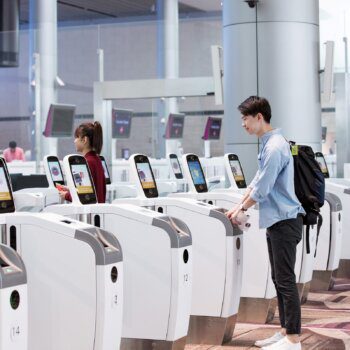Startups are the leading (and yes, sometimes “bleeding”) edge of innovation: they’re small bets on the future, or predictions about what customers will demand. Tracking these bets is an important part of consumer research and can help your team anticipate changing market conditions.
How to Monitor Startups for Emerging Consumer Trends
- Find relevant startups. Research startups that are in your industry, or attempting to reach your customer. Good resources for learning about startups include:
- Digital Resources: Product Hunt, AngelList
- Conferences: Eureka Park at the Consumer Electronics Show (CES), Startup Village at South by Southwest (SXSW)
- Local Events: MeetUp, incubators, accelerators, and co-working spaces
- Identify startup solutions. Write a one-sentence description of what each startup offers on individual cards, or create cards on a Trello board, such as:
- “Airbnb lets people rent homes to visitors while they’re away.”
- “Birchbox lets people test beauty product samples inexpensively.”
- “Snapchat lets people share moments with a select group of friends.”
- Work backwards to find the problem. Now that you know the startup’s solution, think about the original problem each startup is trying to address.
- Airbnb: “You still have to pay the rent/mortgage even when you’re not using your home.”
- Birchbox: “You won’t know how good a beauty product will look on you until you try it.”
- Snapchat: “You don’t want everyone on social media to see what you’re doing all the time.”
- Determine the success factors. Briefly identify what unique value the startup is offers customers.
- Airbnb: “Extra income from vetted lodgers.”
- Birchbox: “Inexpensive samples you can test at home.”
- Snapchat: “Privacy and spontaneity.”
- Cluster problems and success factors. Once you’ve repeated steps 1-3 for several startups, look for patterns. For instance, are customers more motivated by saving money, or are they looking for a personalized experience? Is speed a priority, or is accuracy more important? Remember that patterns are more important than any individual startup—if several startups are addressing a similar problem, it’s a good indication that existing solutions are not adequately serving customers.
- Compare clusters with organizational capabilities. Now that you’ve identified areas of growing consumer interest, review your team’s current capabilities. Are your existing products or services addressing these clusters? If not, can they be easily modified, or do they require entirely new skill sets?
Takeaway: Remember, the goal is not to copy a startup’s solution, but rather, capture changing needs. Repeating this exercise every three to six months will prepare your team to modify your strategy as needed.
_____________________________________________________________
About the Author
This article was produced by NOBL, an organizational design firm. They unleash the creativity and capability of teams through new ways of working.





























